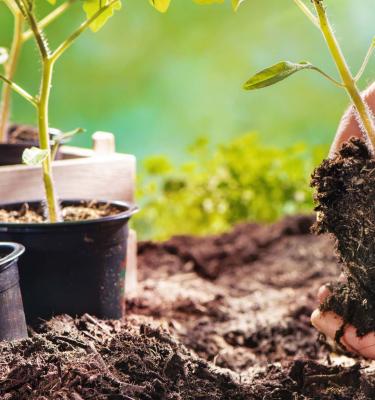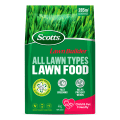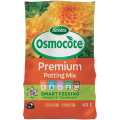September Gardening: Your Monthly Garden Guide
Spring is in the air…
It’s that wonderful time of year when the garden comes to life again after Winter. Deciduous blossom and fruit trees are in full bloom, there are plenty of bulb and seasonal flowers and other trees and shrubs are sprouting bright green new leaves and shoots.

What to plant in September and other September gardening tips
There’s plenty of planting, harvesting and preparing for you to do in the garden this month. Also, start your disease control program on deciduous fruit trees this month. Whatever your gardening plans this month, choose a category below for our essential September gardening tips.
Strawberries can be planted and an early sowing seeds of late spring/early summer vegetables may be made into seed trays under cover or indoors. Native plants, evergreen trees, shrubs and climbers can continue to be planted, as well as salad vegetables, herbs and seasonal flowering annuals. Check out what’s in stock in your garden centre.
Vegetables
There are so many veggie options to grow in September. Not only is it a great time to plant vegetables, but it’s also harvesting season for your winter veggies. There’s plenty to do this month, so choose from the sections below for some monthly inspiration.
What vegetables to plant in September
In warm areas you can start sowing and planting summer crops. Keep planting beetroot, brassicas, peas, rhubarb, asparagus, salad greens (lettuce, rocket, mesclun) and Asian greens can also be sown. It's also time to plant potatoes!
The following vegetables can all be planted in September:
Asparagus, Basil, Beetroot, Bok choi, Beans, Broccoli, Cabbage, Capsicum, Carrot, Cauliflower, Celery, Chilli, Coriander, Courgette, Cucumber, Eggplant, Kale, Leek, Lettuce, Mesclun, Parsley, Parsnip, Peas, Potatoes, Pumpkin and squash, Radish, Rhubarb, Rocket, Silverbeet, Spinach, Spring onions, Sweetcorn, Tomatoes.
Growing vegetables this month
- Water in newly planted seedlings well and feed with a suitable fertiliser to give them a good start.
- After sowing seeds, water well to moisten the soil, then wait until shoots appear before watering again.
- Hand pull or hoe out weeds as they appear – they compete for nutrients and moisture and may also harbour pests that could attack your crops.
- Pull out the last of the winter crops and put them into the compost bin if they are disease-free.
- Preparation for spring sowing and planting should be well underway. Keep the soil tilled, weed-free and moist.
What vegetables to harvest in September
It’s time to harvest the last of the winter veggies, including cabbage, kale, cauliflower, brussels sprouts, broccoli, bok choi, beetroot, parsnip, onions, peas, rocket, lettuce, radish. New season’s asparagus will be peaking now. Harvest spears when about 15cm tall.
Fruit
What fruit to plant in September
Potted deciduous fruit trees and vines can be transplanted this month.
Some good fruit trees and bushes to plant in September include:
Avocado, pear, apple, raspberry, boysenberry, blueberry, strawberry, blackberry, lemon, orange, mandarin, lime, feijoa.
Make sure to plant new blueberry bushes near to each other to encourage cross-pollination between them. Use a large pot which is at least 45cm (18 inches) in both diameter and depth and fill it with Scotts Osmocote® Citrus & Fruit Mix.
Growing fruit in September
- Spring blossom trees may be pruned as soon as they finish flowering. Follow the same principles used for deciduous fruiting trees.
- Apply a copper-based spray to deciduous fruit trees immediately after petal fall to combat fungal diseases like brown rot and freckle. Repeat every 10 – 14 days until trees are fully leafed.
- You may find that your raspberries have been too successful and have started to pop up all around your garden – you can dig these up to prevent them from spreading to unwanted areas.
What fruit to harvest in September
There’s not a lot of fruit in season in September. Your harvest this month include avocados, persimmon, tamarillos and citrus including, limes, lemons, oranges, mandarins – other than that you can put your feet up on the harvesting front.
Give all established trees, shrubs and perennials an application of a long-term Osmocote Controlled Release Fertiliser suited to the type of plant – there’s an extensive range to choose from. Follow instructions for applications rates and methods.
Growing flowers, shrubs and bulbs in September
- Bloomer pots of spring flowering annuals can still be planted out this month for patches of instant impact colour – pansies, violas, Iceland poppies, cinerarias, calendulas are just a few. In warm areas plant seedlings of bedding begonias, marigolds, impatiens and nasturtiums.
- Keep flowering annuals and bulbs growing and flowering well with regular applications of an all purpose fertiliser.
- It’s peak flowering time for cool climate orchids like cymbidiums. Plants may be brought indoors so the beauty of their spikes of blooms may be admired, but don’t keep them inside for prolonged periods.
- Some spring flowering bulbs may be past their best now but don’t cut the flowers or leaves off. Allow them to die down naturally.
Indoor plants September
Plants inside the home assist in purifying the air as well as lending a touch of greenery to your living areas.
- Natural light is important but don’t stand pots on north or west-facing windowsills where they will be exposed to direct sun through the glass.
- Place a saucer or bowl of water near your plants to humidify the air or regularly mist them with a water atomiser.
- Wipe leaves occasionally with a damp cloth to keep them clean.
- Feed every few weeks with ready to use Scotts Osmocote Pour+Feed Indoor Plants – no mixing required.
September lawn care
Mid-September is the ideal time to sow a new lawn. Prepare the area by removing all weeds, hoeing the soil to break up clumps and levelling it. Add a layer of Lawn Builder Lawn Soil and Lawn Builder Starter Slow Release Lawn Food as per bag instructions before sowing.
If you have not already fertilised the lawn this spring, you should do so now.
- Lawn Builder All Lawn Types Slow Release Lawn Food, or Lawn Builder Extreme Green Slow Release Lawn Food (all granular fertilisers that will feed your lawn for up to three months and suitable for all types of grass) will suit most situations.
- If you have a broadleaf weed problem, then choose Lawn Builder + Weedkill Slow Release Lawn Food but read the label first! This fertiliser cannot be applied to buffalo grasses and some other lawn substitutes.
- Control moss in shady areas with a solution of iron sulfate (30 grams in 4.5L of water) applied as a spray or with the watering will help control it. Re-apply if necessary.





































